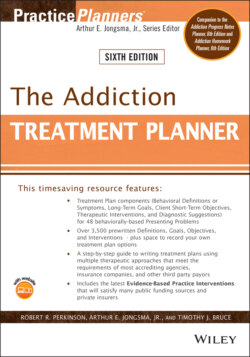Читать книгу The Addiction Treatment Planner - Группа авторов - Страница 21
ANGER BEHAVIORAL DEFINITIONS
Оглавление1 Has a history of explosive, aggressive outbursts, particularly when intoxicated, that lead to assaultive acts or destruction of property.
2 Abuses substances to cope with angry feelings and to relinquish responsibility for aggression.
3 Shows cognitive biases associated with anger (e.g. demanding expectations of others, overly generalized labeling of the targets of anger, anger in response to perceived slights).
4 Shows direct or indirect evidence of physiological arousal related to anger.
5 Reports a history of explosive, aggressive outbursts out of proportion with any precipitating stressors, leading to verbal attacks, assaultive acts, or destruction of property.
6 Displays overreactive verbal hostility to insignificant irritants.
7 Engages in verbal, physical, and/or emotional abuse against significant other.
8 Makes swift and harsh judgmental statements to or about others.
9 Displays body language suggesting anger, including tense muscles (e.g. clenched fist or jaw), glaring looks, or refusal to make eye contact.
10 Shows passive-aggressive patterns (e.g. social withdrawal, lack of complete or timely compliance in following directions or rules, complaining about authority figures behind their backs, uncooperative in meeting expected behavioral norms) due to anger.
11 Passively withholds feelings and then explodes in a rage.
12 Demonstrates an angry overreaction to perceived disapproval, rejection, or criticism.
13 Uses abusive language meant to intimidate others.
14 Rationalizes and blames others for aggressive and abusive behavior.
15 Uses aggression as a means of achieving power and control.
